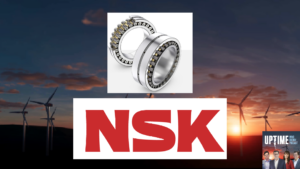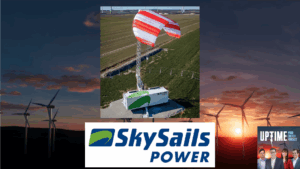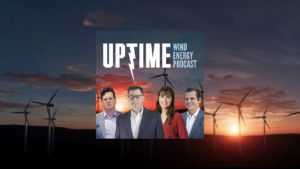Podcast: Play in new window | Download
This week’s News Flash covers Vattenfall considering selling its Norfolk Boreas offshore wind project in the UK due to rising costs. Plus a UK project is attempting to extract rare earth magnets from retired turbines for reuse in new ones. Finally, Ariel Re rebranding its clean energy division as Ariel Green, which provides technology performance insurance policies to protect against production shortfalls and a discussion on how this type of insurance could see increased demand, especially from owners of turbines with known issues.
Sign up now for Uptime Tech News, our weekly email update on all things wind technology. This episode is sponsored by Weather Guard Lightning Tech. Learn more about Weather Guard’s StrikeTape Wind Turbine LPS retrofit. Follow the show on Facebook, YouTube, Twitter, Linkedin and visit Weather Guard on the web. And subscribe to Rosemary Barnes’ YouTube channel here. Have a question we can answer on the show? Email us!
Pardalote Consulting – https://www.pardaloteconsulting.com
Weather Guard Lightning Tech – www.weatherguardwind.com
Intelstor – https://www.intelstor.com
Allen Hall: I’m Allen Hall, president of Weather Guard Lightning Tech, and I’m here with the founder and CEO of Intel Store, Phil Totaro. This is your News Flash.
Vattenfall is in early stage talks to sell its Norfolk Boreas offshore wind project in the UK due to soaring costs. The negotiations are with potential buyers and the discussions are in early phases with no guarantee of a deal. Selling the project could contribute to the UK’s clean energy goals of tripling offshore wind capacity to 50 gigawatts by the end of the decade.
Phil Vattenfall is making some pretty large changes recently in regards to existing wind farms.
Phil Totaro: That’s right, Allen. And with this offer for sale, I think it’s reflective of what’s going on in the wider you know, offshore wind market globally at this point. Inflation’s biting and companies are looking for partners, if they can find them, to either take a portion or an entire project off their hands to free up some cash.
Allen Hall: EMR, HyProMag, ORE Catapult, and Magnomatics, along with the University of Birmingham, have partnered to create Re-Rewind, a project focused on extracting rare earth magnets from retired wind turbines. And using them in new onshore and offshore wind turbines. The partnership aims to establish UK’s first circular supply chain for rare earth magnets used in wind turbines.
Phil, this sounds like a really genius idea. I’m not sure why it hasn’t been implemented elsewhere. So this, this is kind of a cool recycling project going on in the UK.
Phil Totaro: It is cool, and I think the reason why it’s come up now is because you’ve got a lot of the older turbines in the UK that were particularly some Siemens turbines that utilized permanent magnet generators that are, you know, coming up for retirement or refurbishment and replacement.
So you’re, you’re now seeing you know, this industry group supported by the, the Offshore Renewable Energy Catapult undertake this project at this point to also anticipate additional turbines that are going to be coming up within the next 10 to 15 years for, you know, replacement refurbishment and this is technology that they can possibly even license elsewhere in the world.
And it’s a, it’s a great thing if we can extract the neodymium, the dysprosium and the terbium from these, these magnets and reconstitute and reuse it in, in, you know, new new magnets for, for onshore and offshore wind as well. Keep in mind, just real quick, that also in China there are a significant number of, like, Goldwind turbines, for instance, that use a lot of permanent magnets that are also coming up for you know, repowering within the next five to ten years, so…
They’ve also made strides in materials recycling as well and so this project in the UK is just kind of acknowledging a market trend that we see only continuing.
Allen Hall: Ariel Re has rebranded its clean energy division as Ariel Green, recognizing the importance of technology performance insurance in advancing innovation in solar, energy storage, hydrogen, and bioenergy.
Ariel Green has insured over 30 billion worth of assets across six continents and covering over 30 clean energy technologies, including a 100 plus gigawatts of solar warranties. Technology performance insurance policies protect against production shortfalls due to technology failures, enabling long term warranties and better financing terms for clean energy projects.
Phil, there’s got to be a huge demand for these kind of insurance products based on what’s happening, at least in the wind world right now.
Phil Totaro: There is, and keep in mind as well, that this company has a relationship with Lloyd’s in the UK. And they do a significant amount of offering of, you know, or kind of reselling of, of Lloyd’s products or Lloyd’s will reinsure some of their products as well.
So you know, having that kind of syndicate relationship actually enables them to, to, yeah. Significantly increase what they’ve been doing. I think it’s been great and I’m sure that demand will increase for this as companies look to provide a mechanism for cost recovery in an ever more pressure packed environment in, in the world.
Allen Hall: Does this change the marketplace in the way that like a Siemens Gamesa is handled? If I’m buying Siemens Gamesa turbines and they’ve had this issue on the 5X. Is, is that really peak demand in this kind of insurance product?
Phil Totaro: Potentially. The, the reality is every OEM will have to go through some type of certification, obviously, for their, their product.
And unless the asset owner or operator wants to balance sheet underwrite the project, they are necessarily going to have to take on this type of an insurance policy. Now the question of whether or not you’re going to see Significant uptick in demand is is a good question because ultimately some companies don’t necessarily want to pay a higher premium which would also be associated with buying a riskier turbine.
So potentially, I guess is the short answer, but it’s in general, this type of you know, performance based protection is, is a sensible option for, for a lot of asset owners.
Allen Hall: It makes sense. If you want to learn more about mergers, acquisitions, and partnerships in wind energy, check out our friends at Intelstor at intelstor.com.













